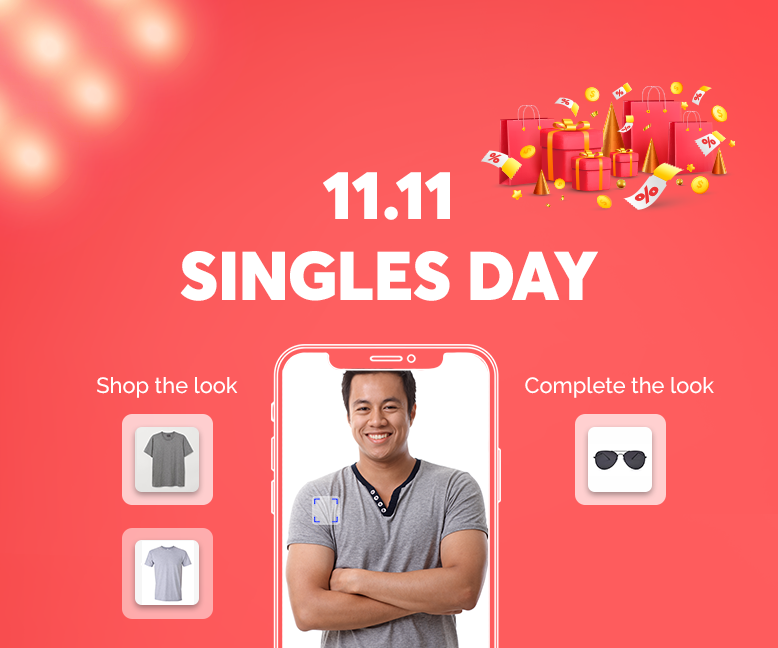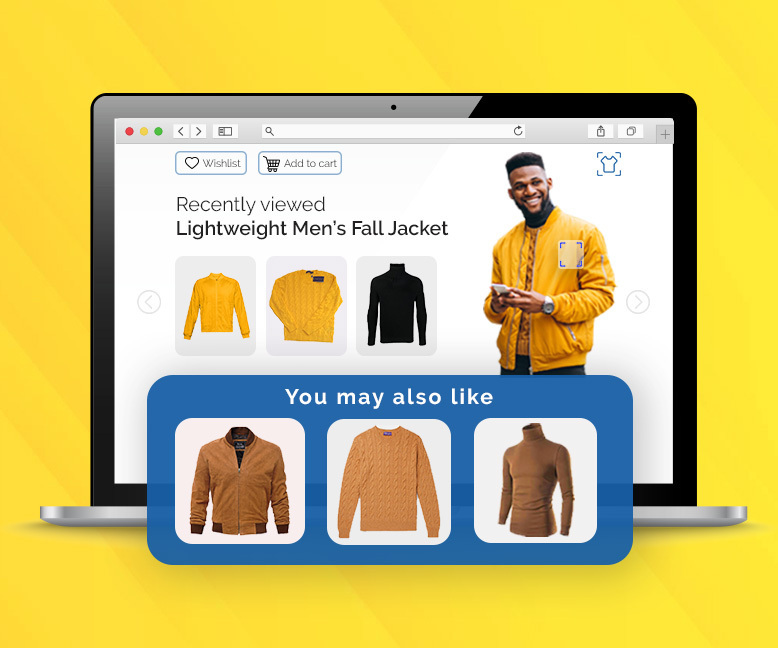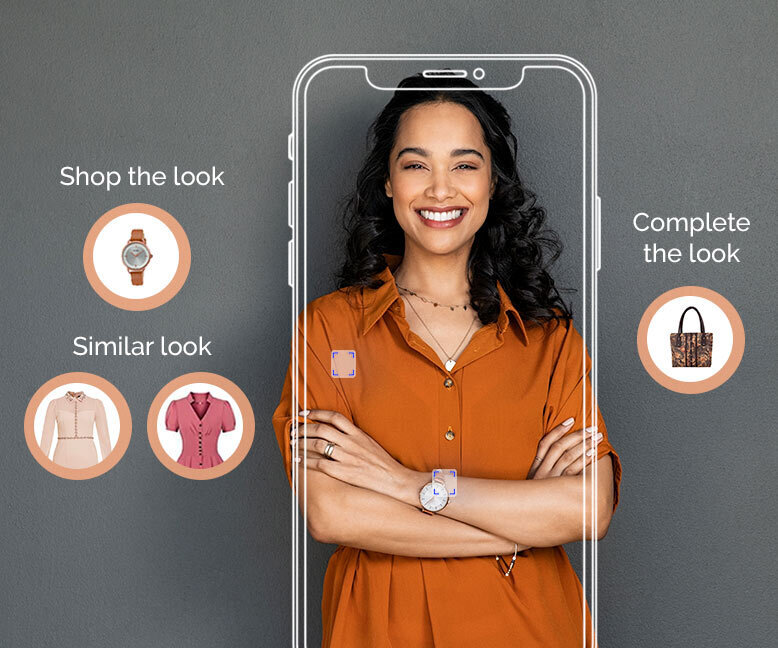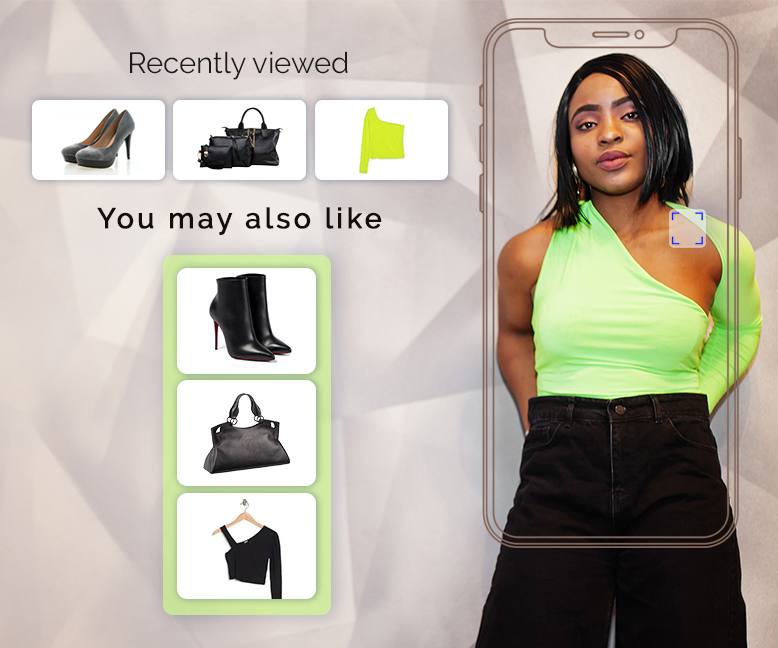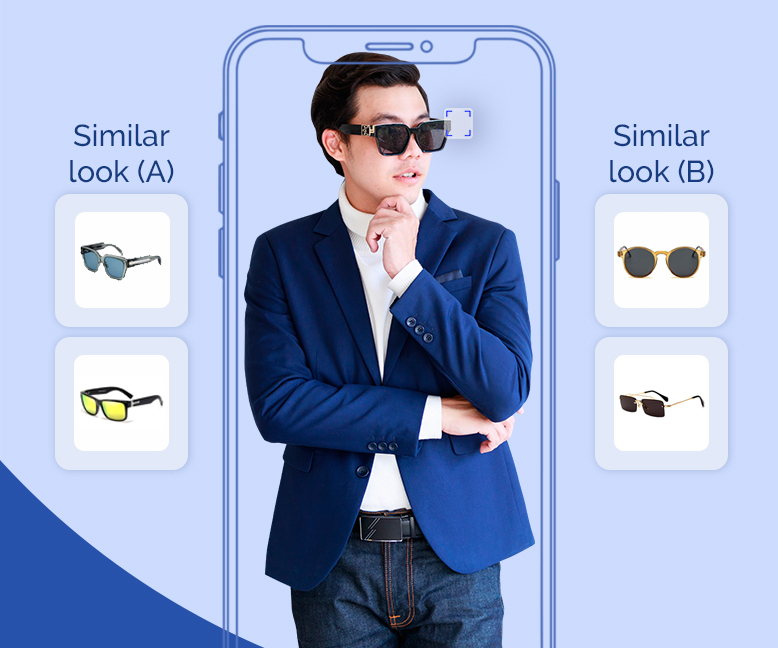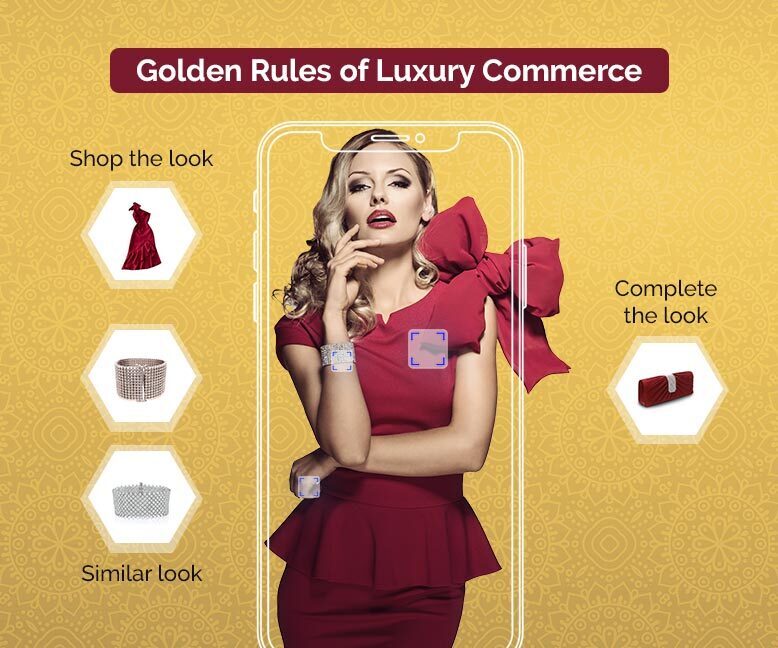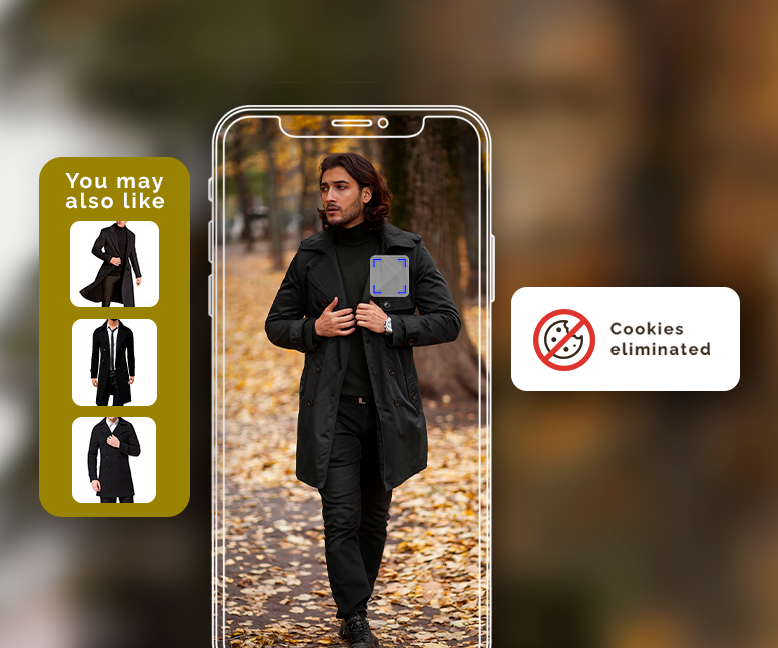- November 10 2022 | 7 mins read
How is Visual Search Empowering Shoppers in India
Visual search technology has changed the shopping experience across the globe. Its applications—such as augmented reality and product recommendations—have made finding the perfect product easier for shoppers.
As AI continues its entry into Indian retail markets, we’re looking at some of the challenges hindering adoption—and why they’re worth overcoming. You’ll also learn more about the varied applications of AI-powered visual search in retail—but let’s start with the why.
Let’s go.
Why is visual search popular?
Visual search is popular because it’s easy and convenient—it’s as simple as that.
The increased use of the internet, alongside the growing number of smartphone users worldwide—approximately 6.64 billion people—has made it easier for customers to search and shop using images.
Traditionally, customers have attempted to find products using words—an approach that we found to be wildly inefficient when compared to using visual search.
When searching manually, shoppers took four to six minutes to track down items from an image using keywords. When using visual search, this same search effort took two to three seconds. That’s a big difference.
The effectiveness of visual search for finding relevant results is unmatched, and improves the shopping experience in a wide variety of industries. Of course, it doesn’t come without some challenges—let’s take a look.
The challenges of visual search in India
Visual search relies on artificial intelligence to find the best match for images uploaded to a search. For example, if a shopper’s looking for a particular bag—the computer vision technology analyzes the image, compares it to those in your product catalog, and returns the closest matches.
Introducing AI technology to new markets can be tricky due to language barriers—just like any other market entry. Where some products or services can be quickly and easily translated and localized, AI tech requires more specialized translation and localization.
This presents two crucial challenges when introducing visual search in India:
1. There are a wide variety of languages to accommodate
The Eighth Schedule to the Constitution of India contains a list of 22 scheduled languages, but the complete list of spoken languages is much longer. Translating AI frameworks and documentation to accommodate the wide variety of languages spoken is no small task—but it’s by no means insurmountable.
2. AI-powered visual search needs to be trained on Indian fashion
Secondly, AI technology requires training data to adequately recognize and identify items and products in images. Many existing visual search capabilities aren’t trained with Indian fashion in mind, meaning new datasets and training processes are needed to ensure the correct products are found. Both of these are hurdles, not brick walls—and Indian retailers should take the plunge now to prepare for the visual search wave.
5 Visual Search Applications for the Indian Market
Here are five ways in which visual search is improving the shopping experience for customers, and increasing sales for retailers.
1. Enable shoppers to search by image
Searching for products using images is one of the first applications of visual search that comes to mind in any market. No longer do consumers find their favorite fashion trends in magazines and in-store alone—social media now gives shoppers a new way to find their style.
One brand that knows this is Flipkart—an Indian ecommerce company headquartered in Bangalore. When they updated their app’s capabilities to include visual search, they enabled customers to find their ideal product using images instead of text.
They simply upload a picture—be it from their camera roll or social media—and search the store for a similar, if not identical, product. Flipkart not only increased conversions, but also improved the customer experience for shoppers.
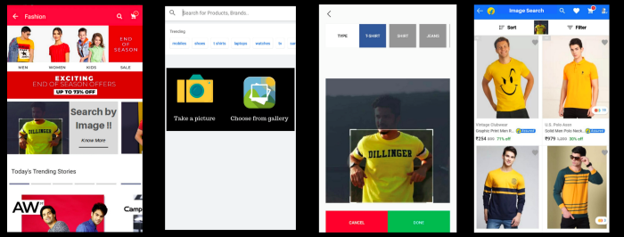
2. Offer visually similar recommendations to shoppers
Another way visual search comes in handy is when providing suggestions to shoppers based on what they’re looking for. Regardless of whether shoppers started with a textual or visual search, AI computer vision can help retailers show shoppers similar products to what they’re already looking at.
For example, let’s say your shopper wants to find a floral-printed, red saree. They’re viewing the product details page (PDP) for one of your best-sellers, but aren’t quite sold. AI retail tech enables you to show visually similar recommendations, so—in this case—other floral printed, red sarees. This increases the options readily available to shoppers and provides an easier shopping experience, leading to more conversions.
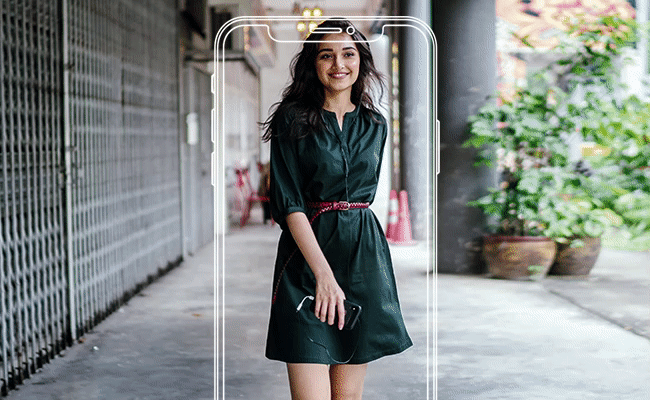
3. Help customers shop the look
Let’s jump right back into that floral printed, red saree example. The model in the product image is likely wearing other items besides the saree, such as jewelry and shoes.
Retailers can use visual search technology to provide product recommendations for secondary items included in an image—so, items that aren’t the saree. This helps shoppers easily find accessories, and leads to an increased average order value—what’s not to love?
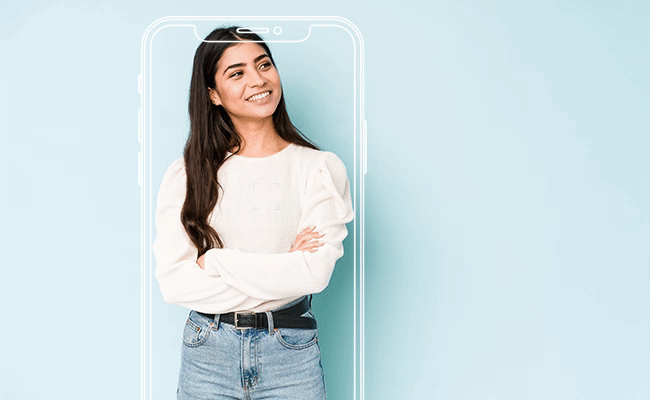
4. Improve the shopping experience with augmented reality
A factor that holds many customers back when online shopping is the inability to try before you buy. They don’t want to purchase products before they’ve had the chance to try out the fit and style.
Enter: augmented reality (AR).
AR superimposes or overlays digital images onto a real-world environment, allowing customers to see how items look on a virtual version of themselves. For example, check out how Dehli-based eyewear brand Lenskart uses AR technology to improve the shopping experience.
Shoppers simply scan their faces using the Lenskart app, and the AI-powered tech looks at historical data on face shape and frame compatibility to provide frame suggestions. Customers can then swipe through frames displayed via AR in real-time to find the frame that best suits them.
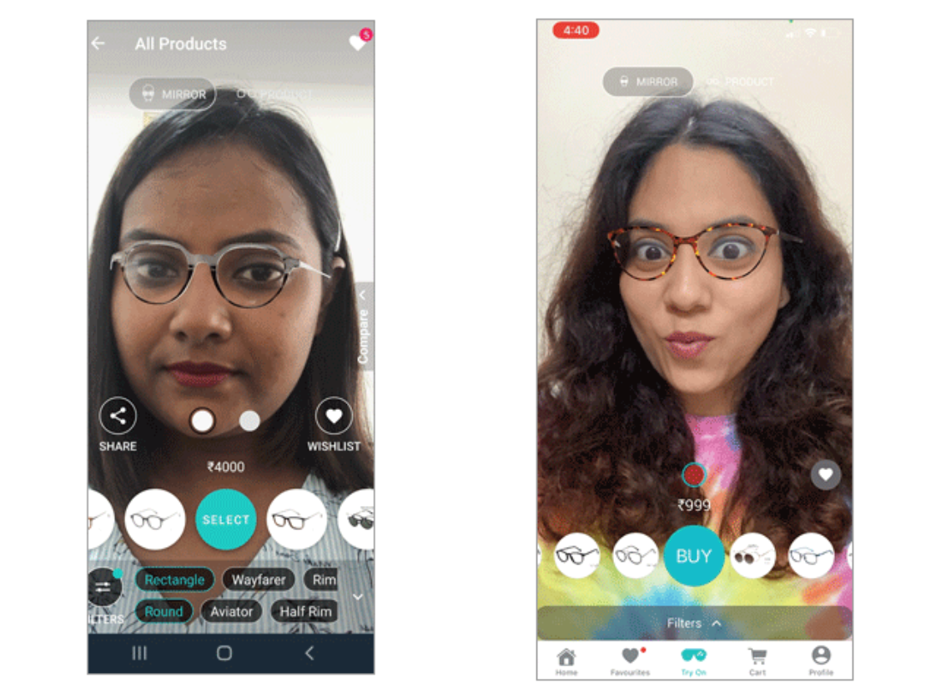
5. Enable social commerce with shoppable posts and videos
Social media is full of product images, videos, and live streams—where influencers are paid to promote brands and products. Visual search technology makes sure that retailers can capitalize on this exposure to increase conversions.
Social commerce has made online shopping easier than ever, as customers are able to make a purchase without even leaving the app. However, this relies on retailers being able to show the right product pages for each item.
Visual search can improve the accuracy of products displayed beneath posts and videos, to ensure that shoppers find what they’re looking for. It connects customers to products using visual search recognition and facilitates a smoother shopping experience.
Use Visual Search in India
Visual search is here to stay, and retailers in India need to adopt AI technology to keep up. It’s not a question of if, but more a question of when.
ViSenze’s Smart Search improves online product search, transforms in-store product discovery, and optimizes merchandising operations. It’s the go-to solution for retailers looking to increase CTRs and boost sales, and can be combined with other AI-powered solutions—such as Smart Recommendations—to optimize the shopping experience from start to finish.
What are you waiting for? Join a ViSenze demo today to find out how AI-powered retail technology can help you increase average order value, boost conversions, and retain customers.

 Blog Home
Blog Home 




